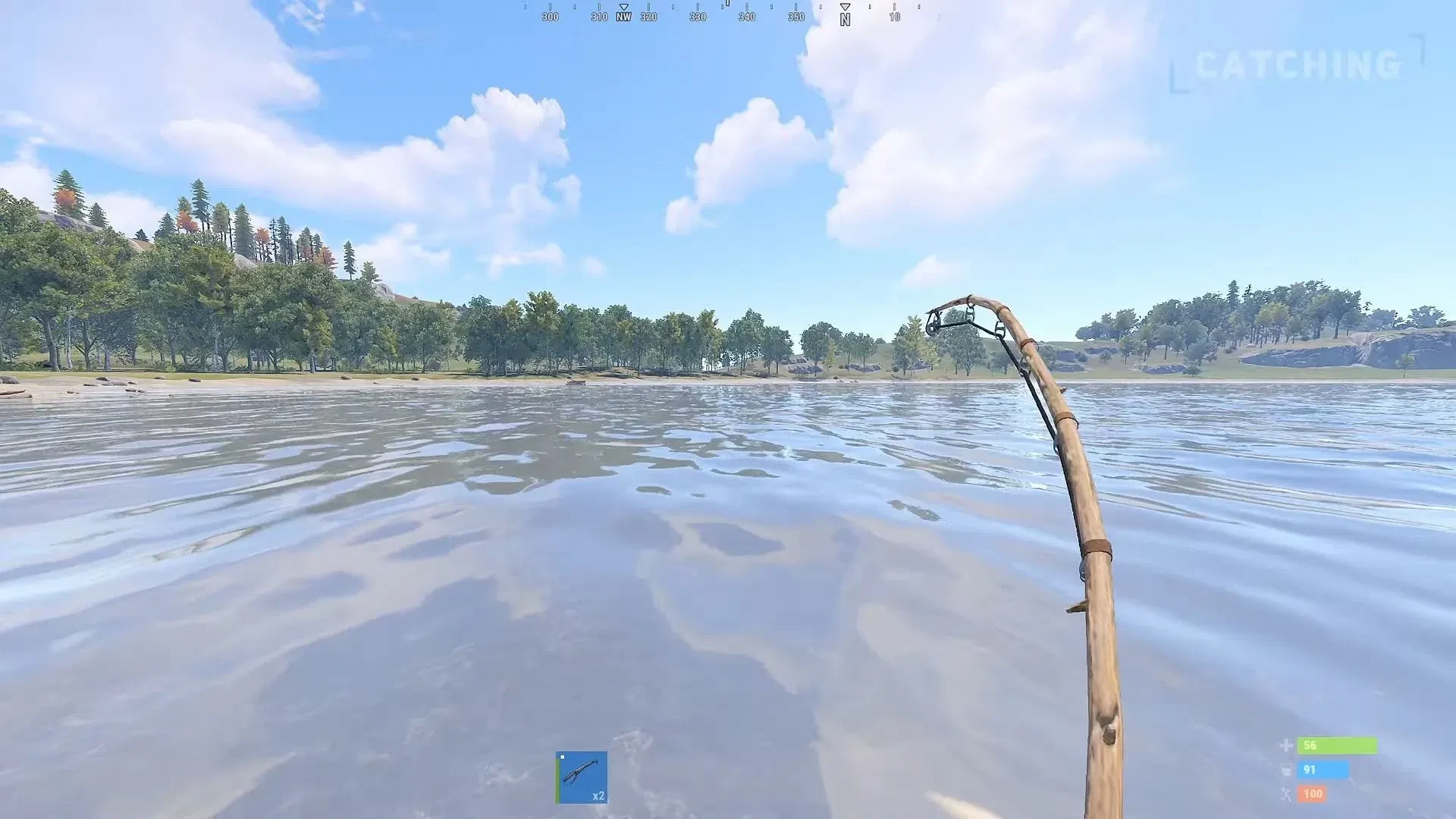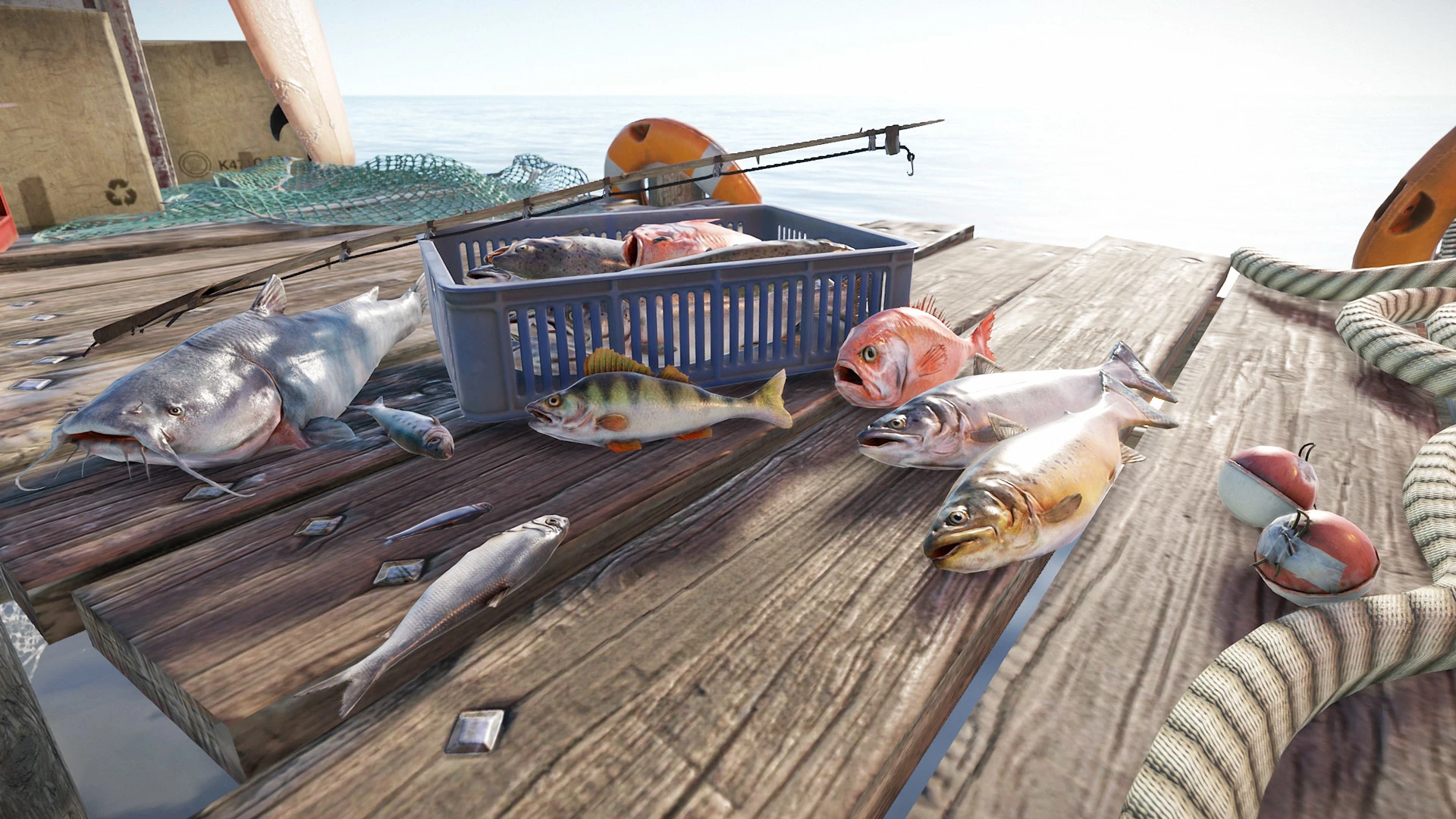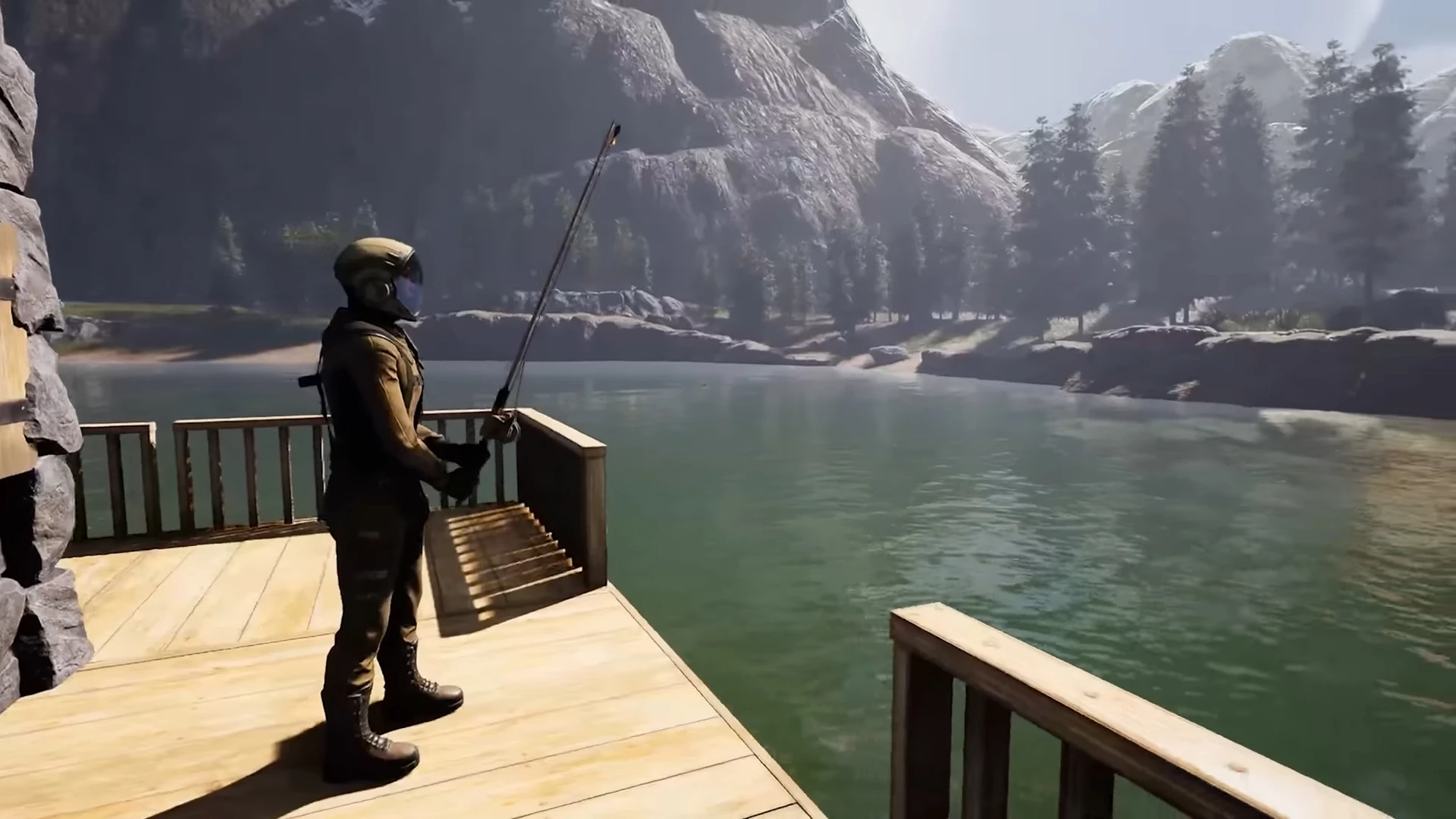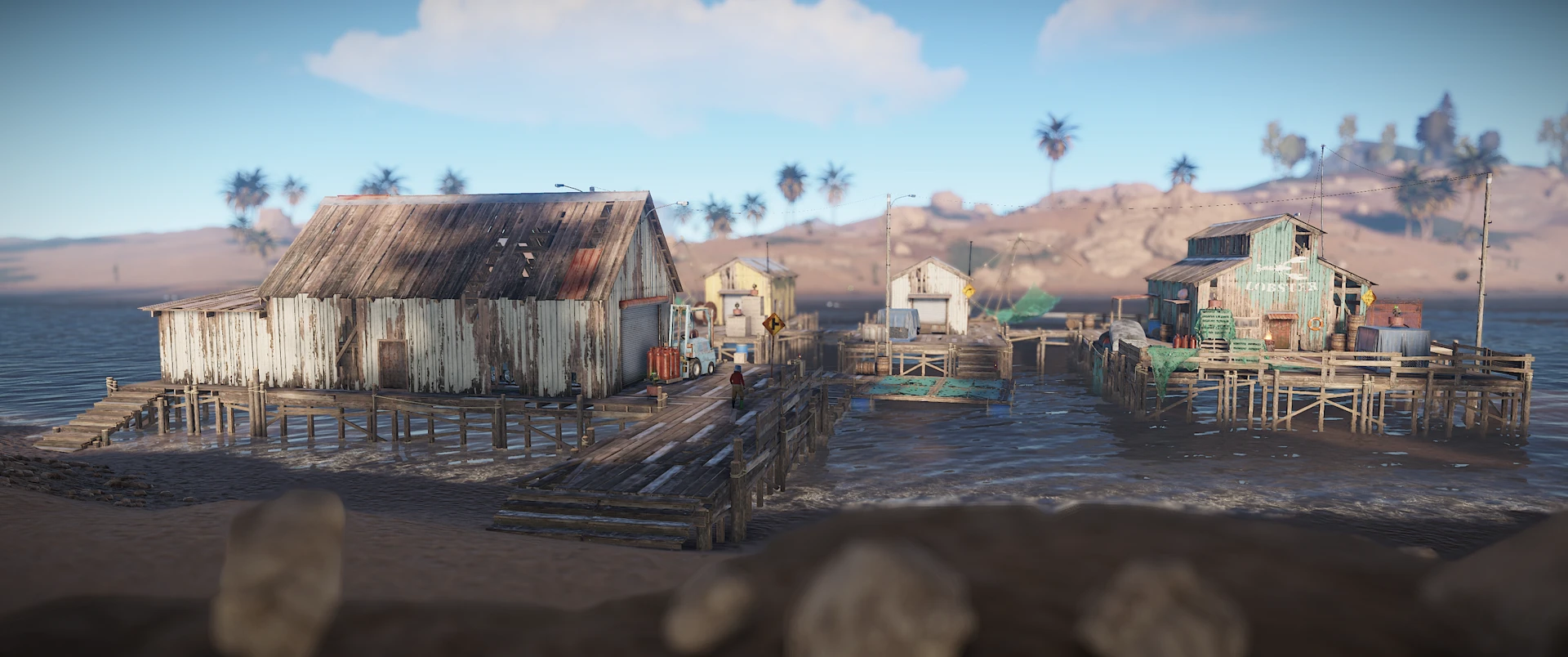
Fishing in Rust: A Peaceful Way to Stay Alive (If You’re Lucky)
How to Fish in Rust Guide | SteelSeries

Learn how to fish in Rust with tips on gear, bait, best spots, and survival tactics to reel in catches without becoming one.
Rust isn’t exactly known for its quiet moments. Most days, survival means sprinting from gunfire, scavenging whatever you can, and hoping the guy in power armor ignores you. But every so often, you can swap the chaos for something a little calmer: fishing.
Fishing in Rust is more than a mini-game — it’s a legit survival tactic. A good haul can keep you fed, hydrated, and stocked with scrap, all without firing a single shot. The catch? You’re still in Rust… which means every relaxing cast could be interrupted by someone who thinks you look like the better catch.
Here’s everything you need to know when it comes to fishing in Rust.
How to Catch Fish in Rust (Quickstart Guide)

If you want to stop starving and start pulling in some fresh seafood, here’s the no-nonsense rundown:
1. Get a Fishing Rod
Craft one using wood and rope, or buy from a vendor at the Fishing Village for scrap.
Bonus: Vendor-bought rods are already in great condition, so no early breakage mid-catch.
2. Bait Your Hook
Common starter baits: worms, small fish, or insects.
Pro tip: Different baits attract different fish. Worms are great for smaller, easier catches, while minnows net you bigger fish.
3. Find a Fishing Spot
Fishing Village: Safe-ish, NPC guards around.
Ocean Shore / Piers: Great variety of fish, but expect player traffic.
Underwater Labs Moon Pool: Stealthy, and sometimes rare fish.
4. Cast Your Line
PC: Right-click to aim, left-click to cast.
Console: Aim trigger, cast with the main action button.
Aim for deeper water for bigger catches.
5. Manage Your Line Tension
Watch the tension meter — keep it in the green by adjusting your reeling speed.
Too much tension? Stop reeling for a moment. Too little? Reel faster.
6. Reel In & Profit
Once landed, you can eat, cook, or sell your fish for scrap.
Sell at Fishing Villages or trade with other players.
Pro Move: If you’re in a high-traffic area, fish with your back to cover. It’s harder to snipe you if a big rock or wall is behind you.
How to Reel In a Fish in Rust
Reeling in a fish in Rust is less about brute force and more about rhythm and patience. If you go full caveman on the reel, your line will snap and you won’t be able to respawn that fish.
Controls
We touched on fishing mechanics a bit, but here’s a deeper look into controls depending on what platform you’re playing on.
PC:
Right-click (hold): Reel in
A/D: Pull your rod left/right to guide the fish
Spacebar: Set the hook when the fish bites.
For precision inputs, a responsive gaming mouse like the Rival 3 Wireless Gen 2 makes every movement smoother — and yes, it matters when your catch is fighting back.
Console:
Left Trigger (hold): Reel in.
Left Stick: Steer the rod.
Action Button: Set hook.
Line Tension 101
The tension meter is your lifeline — keep it in the green.
If it’s too high (red), stop reeling for a second to let it drop.
If it’s too low, reel in faster before the fish escapes.
Big fish will test your reflexes — they dart left and right, so be ready to adjust.
Beginner Mistakes to Avoid

Over-reeling: Holding the reel non-stop like you’re on a slot machine is the fastest way to snap your line.
Ignoring the fish’s movement: Not steering your rod in the opposite direction gives the fish more leverage.
Forgetting to set the hook: Without that quick flick, you’re just dangling bait in front of a free lunch.
Tips for Bigger Catches
Use higher-quality bait to draw in rare fish like Bluefin Tuna or Small Shark.
Aim for deep water and avoid areas with too many shallow splashes.
Keep your rod angled slightly to one side for better leverage.
Tip: If your fish starts to bolt in one direction, don’t fight directly against it. Tilt your rod sideways and reel steadily. You’ll tire it out faster without maxing tension.
Best Fishing Spots in Rust
Not all fishing holes are created equal. Some give you prime catches in peace, others are basically baited sniper traps. Here’s where to drop your line and what to watch out for.
Fishing Villages

Why it’s good: NPC guards keep most hostiles away, plus you can sell your catch on the spot.
What to expect: Easy fishing, steady variety of small-to-medium fish.
Watch out for: The occasional griefer who sneaks past the guards — rare, but it happens.
Ocean Shores & Piers
Why it’s good: High variety, including rare species like Large Trout and Bluefin Tuna.
What to expect: Open space, big water, and bigger catches.
Watch out for: Player traffic — you’re exposed out here, so keep your head on a swivel.
Underwater Labs Moon Pool
Why it’s good: Stealth-friendly and tucked away. Perfect for avoiding player-heavy areas.
What to expect: Chance for rarer fish with minimal interruptions.
Watch out for: If someone does find you here, you’ve got limited escape options.
Bandit Camp Fishing Area
Why it’s good: Fish while you trade with NPCs, knock out two survival needs at once.
What to expect: Low-risk environment, decent fish yields.
Warning: Feels safe, but unattended fishing is a quick way to lose your gear.
Pro Tip: If you’re in a high-value fishing spot, drop a sleeping bag nearby. That way, if things go south, you can respawn close and reclaim your gear.
Choosing the Right Bait & Gear
In Rust, bait isn’t just “whatever you find in the dirt.” The right setup makes the difference between pulling in a Small Trout… or fighting a Small Shark.
Bait Types & What They Attract
Worms: Common starter bait. Attracts smaller, easier fish like Yellow Perch.
Minnows: Good mid-tier bait, higher chance for Large Trout and Bluefin Tuna.
Small Fish: Used as bait for rare and larger fish.
Insects & Grubs: Decent for early game fishing, especially if you’re foraging inland.
Tip: Higher-quality bait = slower bites but bigger rewards. If you just need food fast, stick to worms.
Survival Fish Traps vs. Rod Fishing
Survival Fish Traps:
Pros: Works passively; you can set it and forget it.
Cons: Limited fish variety, slower yield.
Rod Fishing:
Pros: More interactive, access to rare fish.
Cons: Requires your full attention (and puts you at risk if you’re exposed).
Upgrades & Organization
Tackle Drawer: Keep multiple bait types ready to swap depending on your fishing spot.
Rod Quality: A better-condition rod lasts longer and handles tension more smoothly.
Hotbar Setup: Have your fishing rod, bait, and a quick weapon ready in case things go sideways.
Pro Tip: Carry a second rod with different bait loaded. If your current setup isn’t landing bites after a minute or two, swap instantly instead of fumbling through your inventory.
Fish Species and What They’re Worth
Not all fish are created equal. Some fill your belly, others fill your scrap pile. There are also a few that are so rare, they might as well be trophies.
Common Fish (Good for Food, Low Scrap Value)
Yellow Perch: Easy to catch, low food poisoning risk when cooked.
Small Trout: Reliable bite rate, great for early sustenance.
Herring: Quick snack, but not worth much at the market.
Mid-Tier Fish (Balanced Value & Nutrition)
Orange Roughy: Good food stats, sells for a decent scrap amount.
Salmon: Solid hydration + food boost, mid-tier scrap value.
White Sea Bass: Nice mix of food and water, moderate rarity.
High-Value & Rare Fish (Scrap Makers & Bragging Rights)
Large Trout: High scrap payout, solid food return.
Bluefin Tuna: One of the most profitable fish to sell; slow bite rate, but worth it.
Small Shark: Tricky to land; impressive scrap value and bragging rights.
Why It Matters:
Selling rare fish at a Fishing Village can give you enough scrap for key survival upgrades.
Keeping a mix of low- and high-value fish means you’re not starving while you wait for rare bites.
Pro Tip: If you’re after rare fish, go for deep water with high-quality bait — but always have a quick escape route in case another player decides you’re the real catch of the day.
Staying Alive While Fishing
In Rust, fishing might seem like a peaceful break from raiding and running, but to other players, you’re a slow-moving loot piñata. Here’s how to make it home with your catch (and your gear).
Scout Before You Cast
Spend 20–30 seconds scanning for movement, sounds, or fresh campfires nearby.
Use binoculars or a scope if you have them — spotting someone before they spot you is half the battle.
Use Natural Cover
Fish from behind rocks, docks, or the walls of a fishing hut.
Avoid open beaches unless you’re looking for a fight.
Choose Low-Traffic Times
Early mornings or nights (server time) tend to be quieter.
Fewer players = fewer bullets interrupting your fishing trip
Never Go Unarmed
Keep a ranged weapon in your hotbar.
If you’re rod-fishing, keep it slotted next to your weapon so you can swap instantly if someone pushes.
Night Fishing Tactics
Dim your light sources — a bright torch is an open invitation.
Use moonlight or campfire glow sparingly to avoid drawing attention.
Pro Tip: If you hear gunshots within earshot, reel in instantly, move 50–100 meters, and reposition. A good fisherman knows when to abandon the spot. Dead players don’t make sales.
Cast, Catch, Survive
Fishing in Rust can be some of the calmer moments in the game… but also the perfect trap for your next respawn. Whether you’re after a quick meal, a pile of scrap, or the thrill of landing a rare Bluefin, the key is staying alert while you reel in.
So grab your rod, pick your spot, and remember — the fish aren’t your only competition out there.
How to Fish in Rust: FAQs
How do you catch fish in Rust?
Craft or buy a fishing rod, attach bait (worms, minnows, small fish), and find a fishing spot like a Fishing Village, ocean shore, or moon pool. Cast your line, keep the tension in the green, and reel the fish in.
How do you reel in a fish in Rust?
When a fish bites, set the hook and reel in while steering your rod opposite the fish’s movement. Watch the tension meter — too much and your line snaps, too little and the fish escapes.
What is the easiest way to catch fish?
Start with worms as bait at a Fishing Village pier. It’s safe, has a good bite rate for smaller fish, and lets you sell your catch immediately.
What are the controls for fishing in Rust?
PC: Right-click to aim, left-click to cast, A/D to steer, spacebar to set hook, right-click (hold) to reel.
Console: Aim trigger to aim, main action button to cast, left stick to steer, action button to set hook, left trigger (hold) to reel.

Wordsmith at SteelSeries. Enthusiastic about Dota 2 and fighting games. A cat dad.